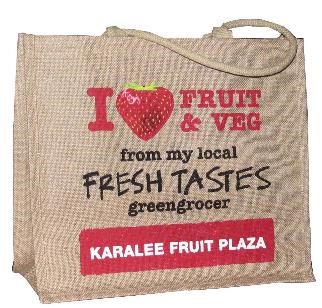Jute Bags – One of the Most Popular Reusable Shopping Bag Options
Jute Bags are attractive, durable, and eco-friendly (5, 6, 7, 8, 9, 10, 11, 12).
Jute fibre is a natural biodegradable and compostable fibre obtained from the jute plant (Corchorus olitorius and Corchorus capsularis). Jute is a rainfed crop which is cultivated mainly in Bangladesh, India and Thailand which account for more than 90 percent of world production. Jute is very fast growing reaching a height of up to 4.5 meters in a period of 5 months. Jute fibre is a long, soft, shiny fibre that can be spun into coarse, strong threads. Jute is a renewable energy source with a high production per hectare.
Jute fibre is used to produce hessian cloth, bags, carpet backing and geo-textiles. Jute cultivation and processing is labour-intensive and therefore provides a livelihood for many farmers and their families. Jute plants also clean the air by consuming large quantities of greenhouse causing CO2. One hectare of jute plants can consume about 15 tons of CO2 and release about 11 tons of oxygen during the jute growing season.
Some of the advantages of jute are listed below:
- One hectare of jute plants can consume about 15 tons of CO2 and release about 11 tons of oxygen during the jute growing season.
- Globally jute is the second most important vegetable fibre after cotton in regard to terms of usage, production, and availability.
- Jute fibre has high tensile strength, low extensibility, and ensures better breathability compared to synthetics.
- Jute produces top quality yarn, fabric, and sacks. It is one of the most versatile natural fibres used for packaging, textiles, and agricultural sectors.
- Jute is a renewable resource with a high production per hectare.
- Jute has the ability to be blended with other fibres, both synthetic and natural, and accepts various dyes such as natural, basic, vat, sulphur, reactive, and pigment dyes. As the demand for natural fibres increase, the demand for jute and other natural fibres that can be blended with cotton will increase. Combined jute/cotton blends may produce fabrics with a reduced cost of wet processing treatments. Jute can also be blended with wool.
- The growing of jute provides an income for more than 4 million farming families in poor communities.
Jute farming is a very labour intensive process, comprising 60%-70% of total production costs, which produces very low monetary rewards on a per hectare or per ton basis. It has been estimated that 215 man-days of labour are required per ton of fibre with the result that the farmer often earns less than US$0.70 per day for his labour. Notwithstanding these facts around 2-3 million tons of jute are produced every year principally in the main jute producing countries, India and Bangladesh. In spite of the low monetary returns, jute farming supports 4 million farmers and their families in India alone and these farming families are located in some of the poorer areas of India. Jute farmers usually rotate their jute crop with rice. Since they are situated in very high rainfall areas these farmers have limited crop choices and jute is a crop of choice in such locations.
Disadvantages of Jute
Apart from cost, jute fabric has the disadvantage that it is treated with toxic mineral oil, referred to as ‘jute batching oil’ during the production process (24, 25, 26, 27, 28, 29, 30). Although an alternative vegetable oil such as rice bran oil, or ‘hydrocarbon free’ oil, is available (31, 32, 33), hydrocarbon free jute is more expensive and is commonly reserved for food grade jute products (34, 35, 36, 37).
A second major disadvantage with jute is due to the fact that jute bags are commonly supplied laminated with an interior lining of plastic. This plastic lining gives the bag rigidity and increased durability, but of course, it also renders the bag (or the plastic component of the bag) non-biodegradable. This plastic lining can constitute 10% – 15% of the total bag weight. Unlined jute bags are commonly available, but are not so popular with consumers. Another option is to stiffen the fabric with starch, however this is not durable and is very susceptible to moisture.





